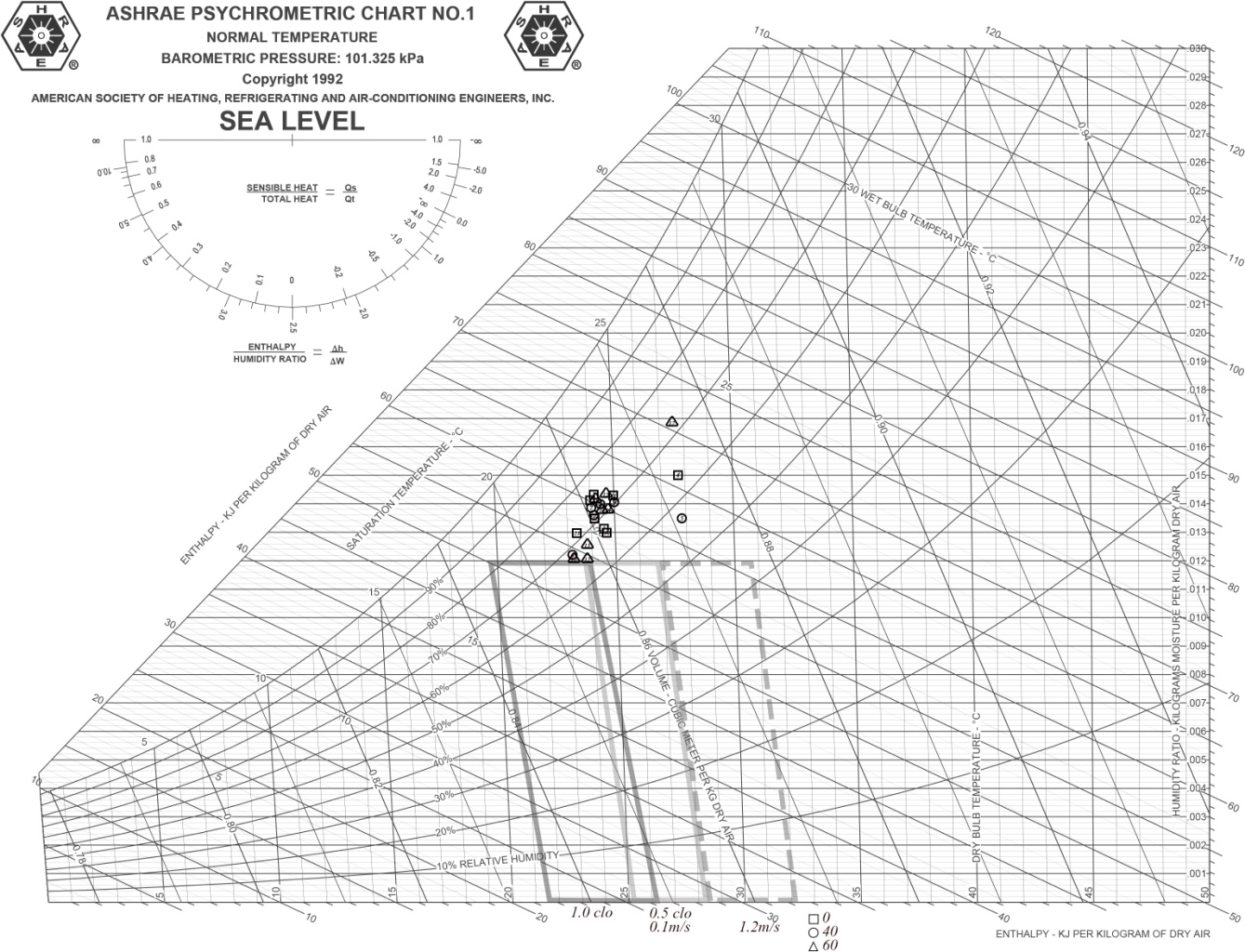Impact of Outdoor Air Exchange Rates on Sleep Quality and the Next-Day Performance with Application of Energy Recovery Ventilator
Main Article Content
Abstract
Sleep quality can affect human health and the next-day performance. High indoor CO2 concentration levels due to insufficient supplied air ventilation could cause poor sleep quality. Bedrooms in condominium in Thailand commonly use a wall mounted split type system without supplied outdoor air ventilation. The rooms are typically constructed having airtight envelope which have air infiltration rates ranging 0.4-0.64 ACH. This study aims to evaluate the impact of increased ventilation rates on sleep quality and the next-day performance, which the surveys were collected from two occupants living in a one bedroom condominium. The field measurement and survey were conducted for twenty days with supplied outdoor airflow rates at 0, 40, and 60 m3 hr-1 through an energy recovery ventilator (ERV). The room air exchange rates were calculated from a linear regression method obtained from a decay tracer gas technique using indoor carbon dioxide generated by occupants. To overcome the maximum limit of CO2 concentration level specified in the standard health guidelines, the ERV unit has to supply outdoor air ventilation rate at 60 m3 hr-1. Overall, the increase of outdoor air ventilation rates can improve sleep quality by 2-13 percent and occupants have better work performance in the next day by 2-20 percent. The increase of outdoor air ventilation through the ERV unit does not affect indoor relative humidity.
Downloads
Article Details

This work is licensed under a Creative Commons Attribution-NonCommercial-NoDerivatives 4.0 International License.
All material is licensed under the terms of the Creative Commons Attribution 4.0 International (CC-BY-NC-ND 4.0) License, unless otherwise stated. As such, authors are free to share, copy, and redistribute the material in any medium or format. The authors must give appropriate credit, provide a link to the license, and indicate if changes were made. The authors may do so in any reasonable manner, but not in any way that suggests the licensor endorses you or your use. The authors may not use the material for commercial purposes. If the authors remix, transform, or build upon the material, they may not distribute the modified material, unless permission is obtained from JARS. Final, accepted versions of the paper may be posted on third party repositories, provided appropriate acknowledgement to the original source is clearly noted.
References
American Society of Heating, Refrigerating and Air-Conditioning Engineers [ASHRAE]. (2010). ANSI/ASHRAE Standard 62.1-2010, Ventilation for acceptable indoor air quality. Atlanta, GA: Author.
American Society of Heating, Refrigerating and Air-Conditioning Engineers [ASHRAE]. (2013). ANSI/ASHRAE Standard 55, Thermal environmental conditions for human occupancy. Atlanta, GA: Author.
American Society for Testing and Materials [ASTM]. (2011). ASTM E741-11: Test method for determining air change in a single zone by means of a tracer gas dilution. USA: Author.
Buysse, D. J., Reynolds III, C. F., Monk, T. H., Berman, S. R., & Kupfer, D. J. (1989). The pittsburgh sleep quality index: A new instrument for psychiatric practice and research. Psychiatry Research, 28(2), 193–213. Retrieved from http://doi.org/10.1016/0165-1781(89)90047-4.
Jareemit, D. (2015). Uncertainty distribution of air infiltration rates of Thai detached homes for energy model. Journal of Architectural/Planning Research and Studies, 12(2), 39-52.
Fan, Y., Kameishi, K., Onishi, S., & Ito, K. (2014). Field-based study on the energy-saving effects of CO2 demand controlled ventilation in an office with application of Energy recovery ventilators. Energy and Buildings, 68( Part A), 412–422. DOI:10.1016/j.enbuild.2013.09.043.
Fisk, W. J., Satish, U., Mendell, M. J., Hotchi, T., & Sullivan, D. (2013). Is CO2 an indoor pollutant? Higher levels of CO2 may diminish decision making performance (No. LBNL-6148E). Ernest Orlando Lawrence Berkeley National Laboratory.
Mulgrew, A. T., Ryan, C. F., Fleetham, J. A., Cheema, R., Fox, N., Koehoorn, M., FitzGerald, J. M., Marra, C., & Ayas, N. T. (2007). The impact of obstructive sleep apnea and daytime sleepiness on work limitation. Sleep Medicine, 9, 42-53. DOI:10.1016/j.sleep.2007.01.009.
National Institutes of Health [NIH]. (2012). Why is sleep important? - National Heart, Lung, and Blood Institute. Retrieved from https://www.nhlbi.nih.gov/health/health-topics/topics/sdd/why.
National Institute for Occupational Safety and Health [NIOSH]. (2002). Health Hazard Evaluation (HHE) report. Cincinnati, Ohio: Author.
Rosekind, M. R., Gregory, K. B., Mallis, M. M., Brandt, S. L., Seal, B., & Lerner, D. (2010). The cost of poor sleep: Workplace productivity loss and associated costs. Journal of Occupational and Environmental Medicine, 52, 91-98. DOI:10.1097/JOM.0b013e3181c78c30.
Strøm-Tejsen, P., Wargocki, P., Wyon, D. P., & Zukowska-Tejsen, D. (2014). The effect of CO2 controlled bedroom ventilation on sleep and next-day performance. Proceedings of ROOMVENT 2014. (pp. 1-8). Denmark: Technical University of Denmark.
Strøm-Tejsen, P., Zukowska, D., Wargocki, P., & Wyon, D. P. (2016). The effects of bedroom air quality on sleep and next-day performance. Indoor Air, 26(5), 679–686. DOI:10.1111/ina.12254.
Slats, D., Claassen, J., Verbeek, M. M., & Overeem, S. (2013). Reciprocal interactions between sleep, circadian rhythms and Alzheimer’s disease: Focus on the role of hypocretin and melatonin. Ageing Research Reviews, 12, 188-200. DOI:10.1016/j.arr.2012.04.003.
Wang, L., Curcija, D., & Breshears, J. (2015). The energy saving potentials of zone-level membrane-based enthalpy recovery ventilators for VAV systems in commercial buildings. Energy and Buildings, 109,47–52. DOI:10.1016/j.enbuild.2015.10.009.
Yang, P., Li, L., Wang, J., Huang, G., & Peng, J. (2015). Testing for energy recovery ventilators and energy saving analysis with air-conditioning systems. Procedia Engineering, The 9th International Symposium on Heating, Ventilation and Air Conditioning (ISHVAC) joint with the 3rd International Conference on Building Energy and Environment (COBEE), 12-15 July 2015. Tianjin, China: Procedia Engineering, pp. 438–445. DOI:10.1016/j.proeng.2015.08.1090.


